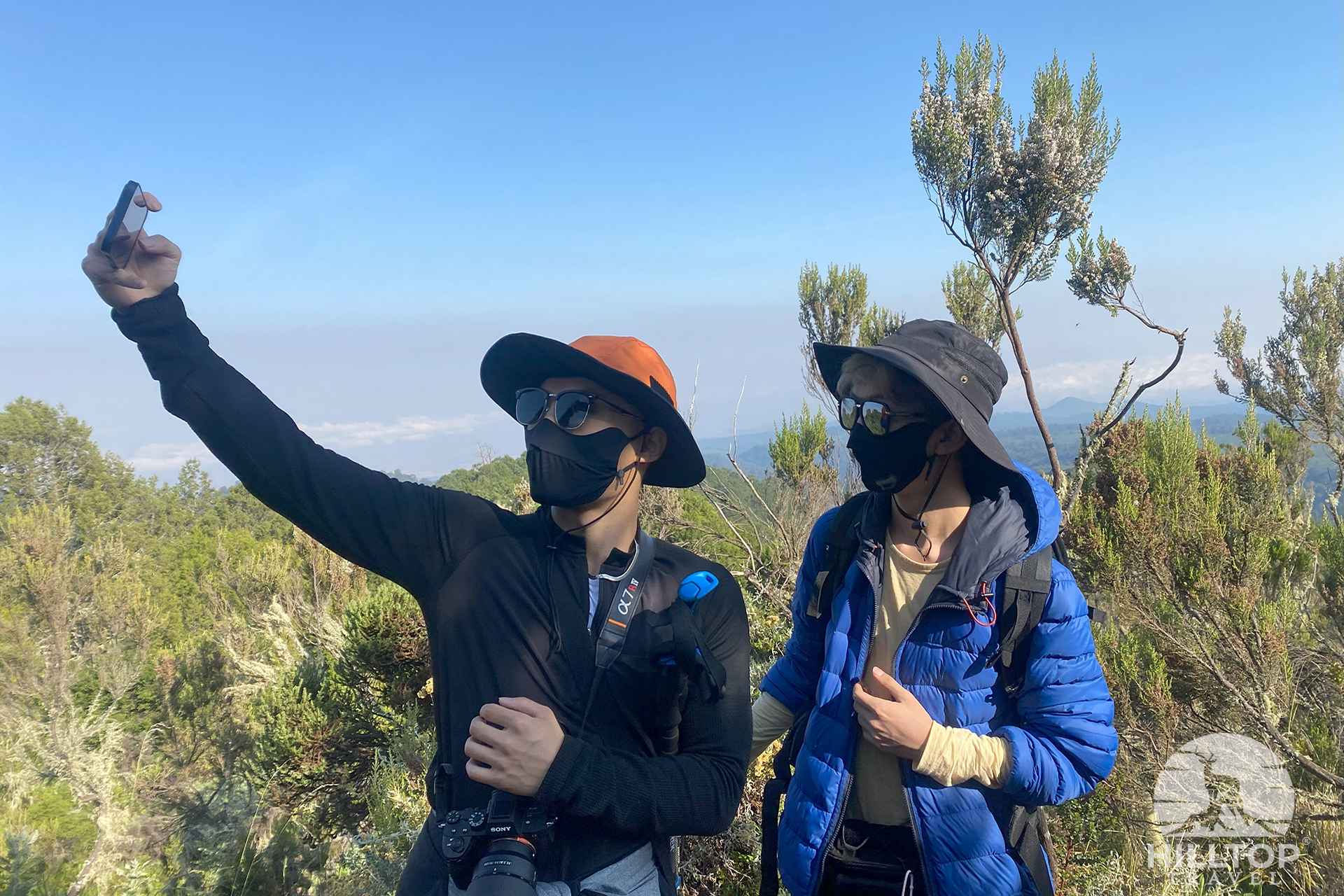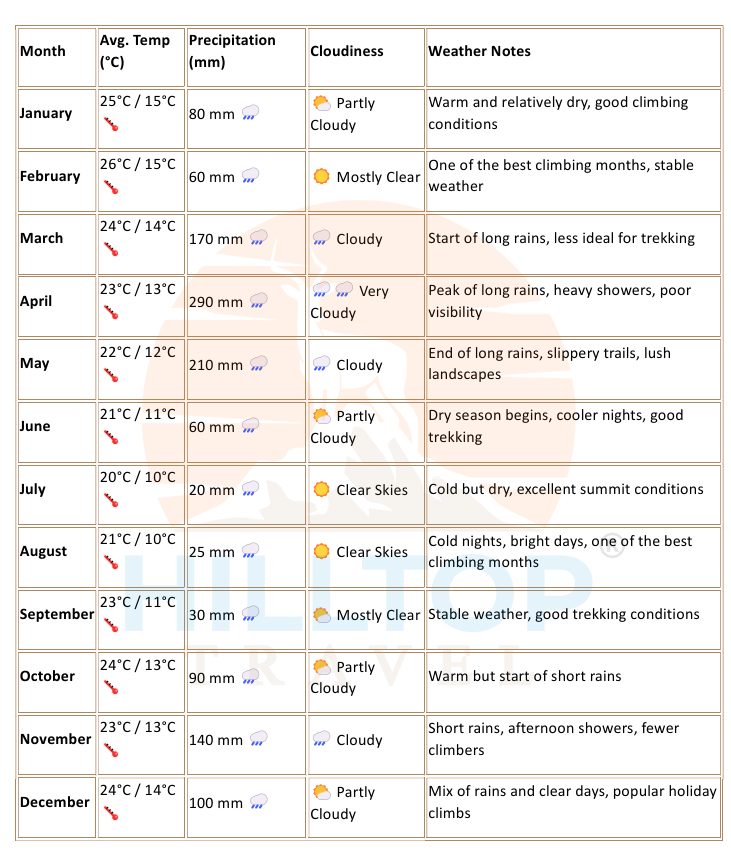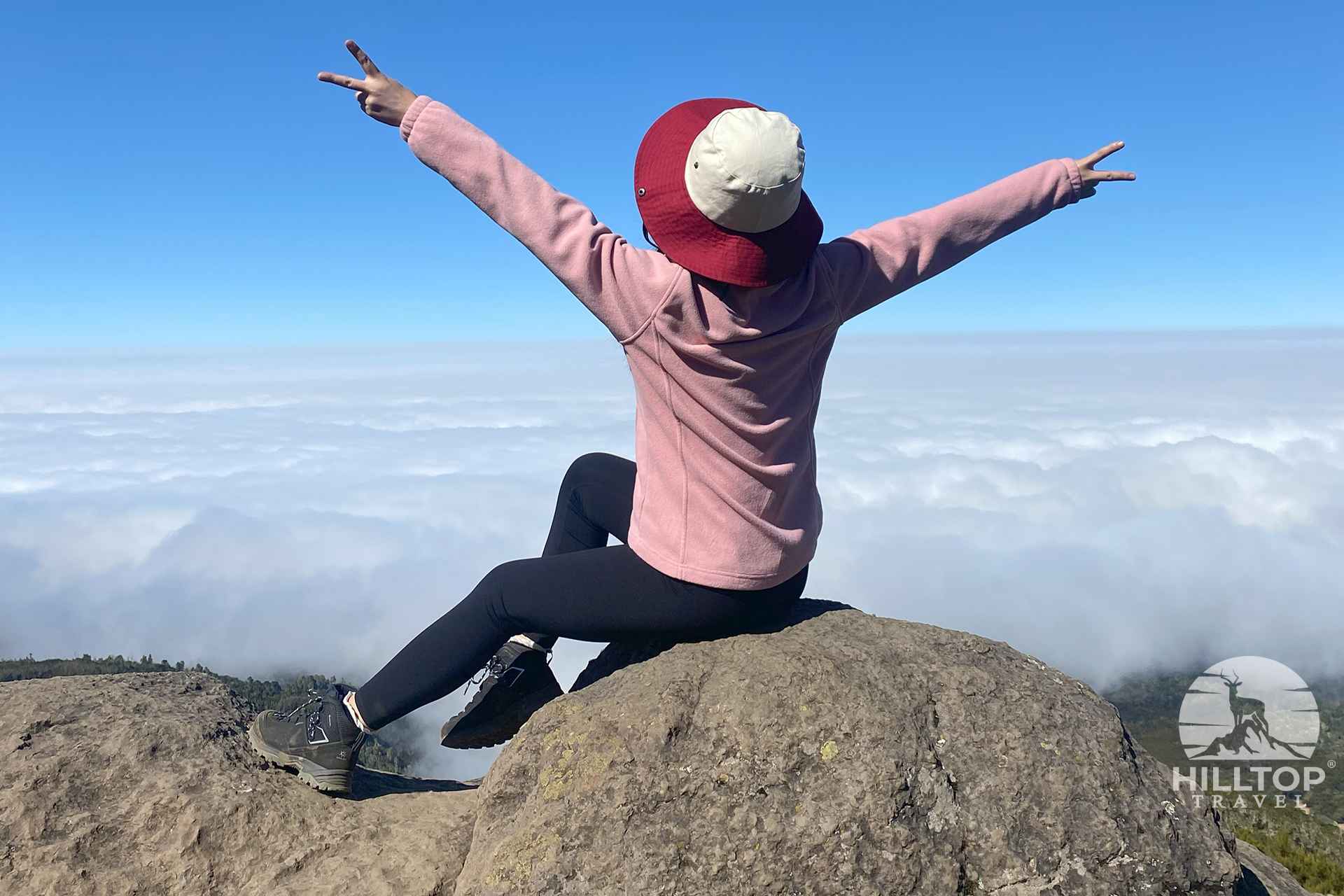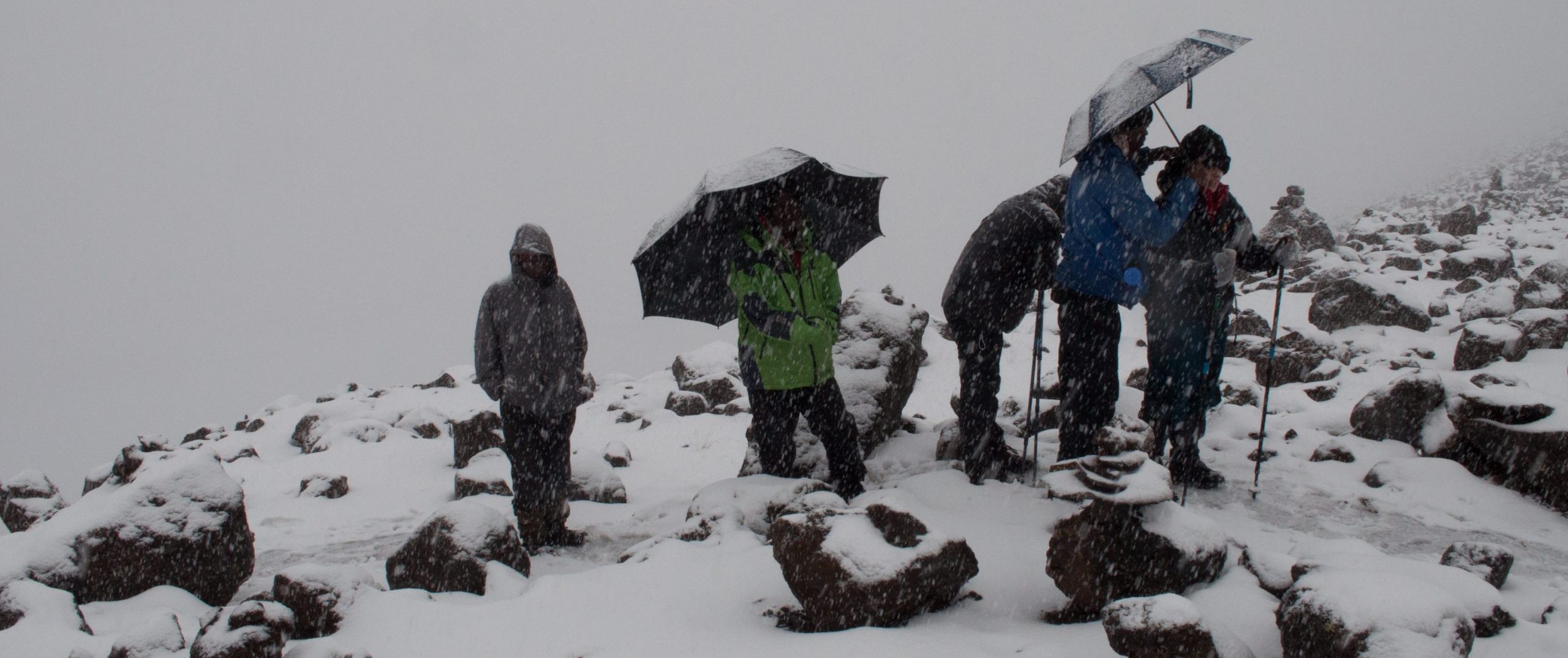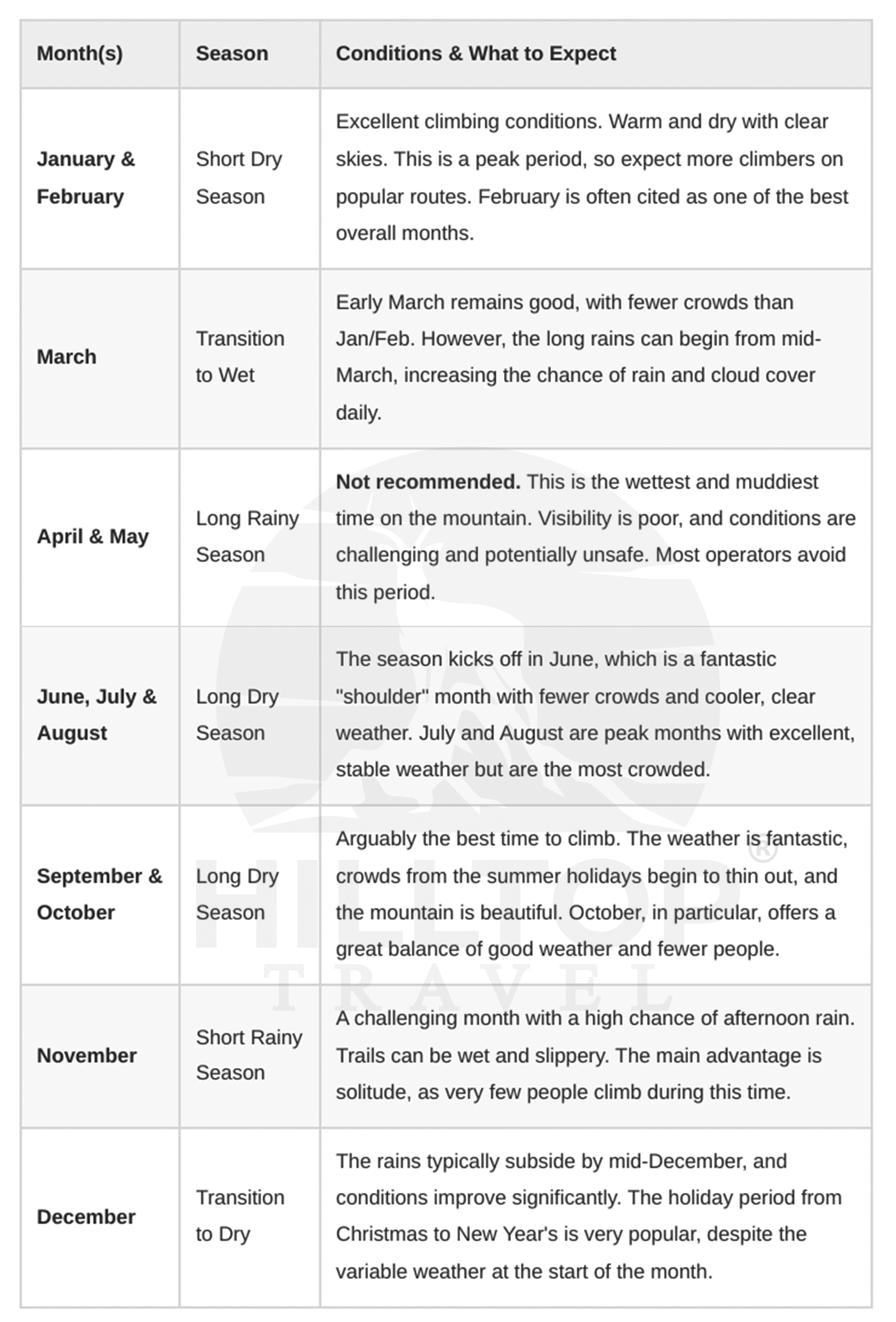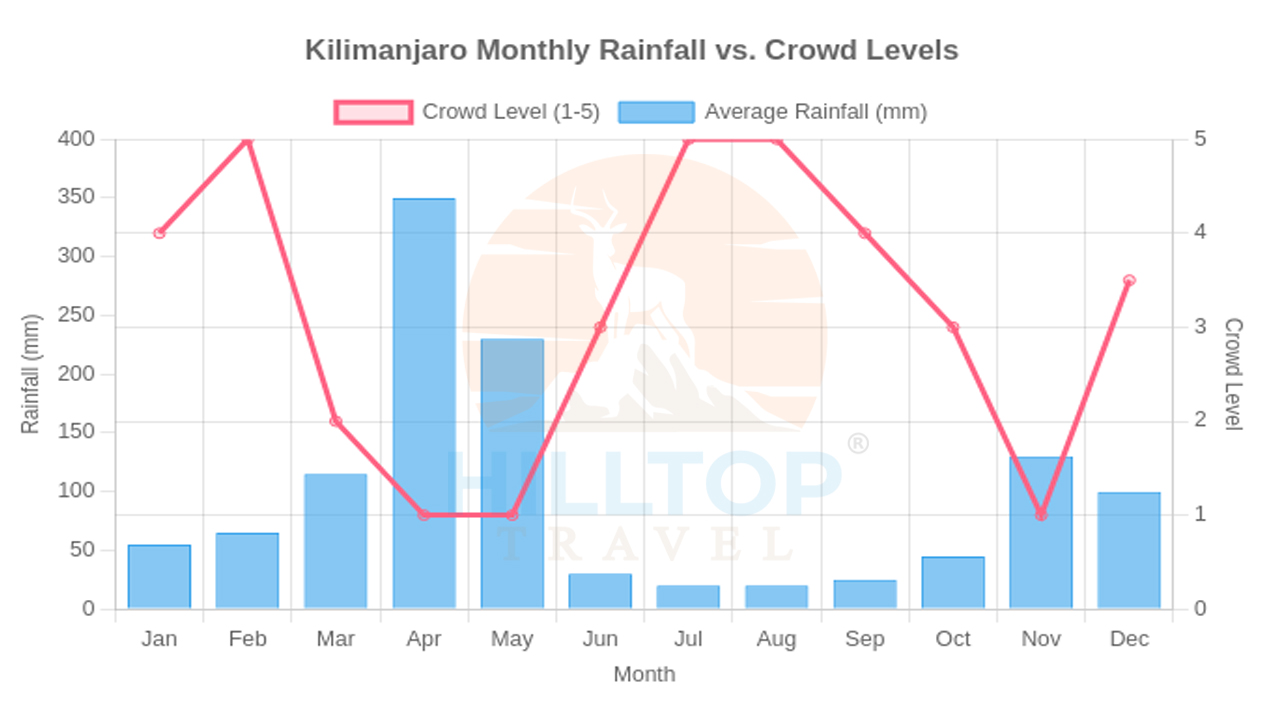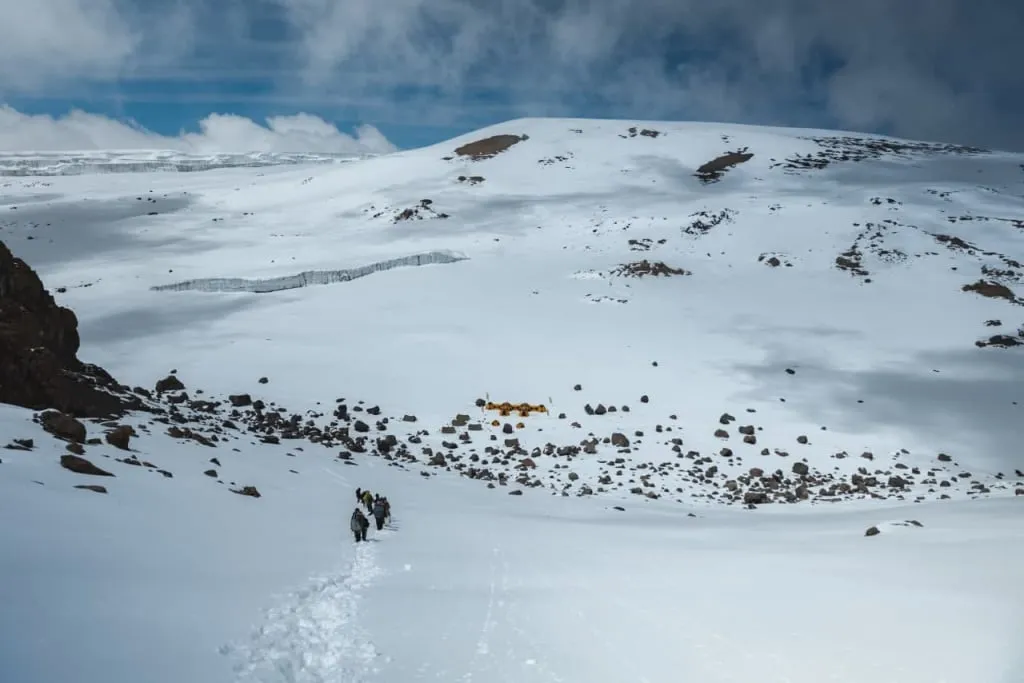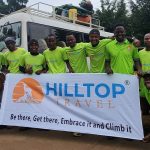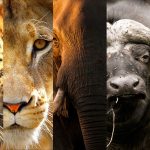Kilimanjaro Hiking Seasons: A Complete Guide to the Best Time to Climb
Planning an ascent of Mount Kilimanjaro is an exciting endeavor, but one question looms large for every aspiring climber: when is the best time to go? The answer is crucial, as the weather on Africa’s highest peak can make the difference between a triumphant summit and a challenging, muddy slog.
Unlike many parts of the world, Kilimanjaro’s climate isn’t defined by four distinct seasons but by wet and dry periods.
This comprehensive guide, brought to you by the experts at Hilltop Travel, will walk you through the Kilimanjaro hiking seasons, including a detailed month-by-month breakdown, to help you choose the perfect time for your once-in-a-lifetime adventure.
Understanding Kilimanjaro’s Weather: Dry vs. Wet Seasons
Due to its proximity to the equator, Mount Kilimanjaro does not experience summer, winter, spring, or autumn. Instead, its weather is characterized by two main seasons: the dry season and the rainy season. Each of these is further divided into a long and a short period.
Dry Seasons (Best for Climbing): These periods offer the most favorable conditions with clear skies, less rain, and better visibility. There are two dry seasons: a long one from late June to October and a shorter, warmer one from December to mid-March.
Wet Seasons (Challenging): These are marked by significant rainfall, which can lead to muddy trails, poor visibility, and colder, more uncomfortable conditions. The long rains occur from late March to early June, and the short rains typically fall in November.
As noted by climbing experts, the best time to climb Kilimanjaro is during its dry seasons, which span from “December to mid-March and late June to October.” .
It’s also important to remember that Kilimanjaro creates its own weather. As you ascend through its five distinct climate zones—from the hot, cultivated base to the arctic summit—temperatures and conditions can change dramatically in a single day.
The Two Prime Climbing Windows (Dry Seasons)
the highest chance of a successful and enjoyable climb, timing your trek during one of the two dry seasons is highly recommended.
The Long Dry Season (June to October)
This is widely considered the best and most popular time to climb Kilimanjaro. The weather is generally stable, with clear, sunny skies and very little precipitation. The trails are dry and firm, making for safer and more pleasant trekking.
Pros: Excellent visibility with stunning panoramic views, minimal rain, high summit success rates.
Cons: This is the peak season, so trails can be crowded, especially in July and August. It’s also slightly colder than the other dry season, particularly at night and on the summit.
The Short Dry Season (December to March)
This is another excellent window for climbing, offering a great alternative to the June-October period. The weather is generally clear and pleasant, with the added benefit of being slightly warmer.
Pros: Warmer temperatures, clear skies, and beautiful green landscapes following the short rains. January and February are particularly popular.
Cons: It can be busy, especially around the Christmas and New Year holidays. There’s a slightly higher chance of occasional afternoon showers compared to the long dry season.
The Challenge of the Wet Seasons
While it is possible to climb Kilimanjaro year-round, trekking during the rainy seasons presents significant challenges and is generally not recommended, especially for first-time climbers.
The Long Rains (April and May)
This is the wettest time of year on Kilimanjaro. Heavy, persistent downpours are common, especially in the lower rainforest zone, turning trails into deep mud. Cloud cover is thick, obscuring the beautiful views.
Challenges: Extremely muddy and slippery trails, poor visibility, wet gear that is difficult to dry, and an overall less enjoyable experience. Success rates are significantly lower, and many reputable operators, including Hilltop Travel, suspend climbs during this period for safety reasons.
The Short Rains (November)
The short rainy season is less intense and less predictable than the long rains. It’s characterized by afternoon thundershowers, but mornings are often clear. While still a challenging time to climb, it offers the benefit of solitude on the mountain.
Challenges: Risk of daily rain, cloudy conditions, and potentially slippery trails. This season is best suited for experienced trekkers who are prepared for wet conditions and value having the mountain to themselves.
Kilimanjaro Month-by-Month: A Detailed Breakdown
To help you pinpoint the perfect time, here’s a closer look at what to expect each month.
Visual Guide: Best Months to Climb Kilimanjaro
This chart provides a clear visual summary of the trade-offs between weather and crowds throughout the year. The best climbing windows are when rainfall is low. As you can see, these periods often coincide with higher crowd levels.
Beyond Seasons: Other Factors to Consider
While weather is the primary consideration, a few other factors might influence your decision:
- Crowds: If you prefer a quieter experience, consider the “shoulder” months like June, September, or October. They offer a great balance of excellent weather and fewer people than the peak months of July, August, and February.
- Full Moon Climbs: Many climbers aim to summit during a full moon for the incredible nighttime visibility it provides on the final ascent. This makes these dates very popular, so you’ll need to book far in advance.
- Acclimatization: As emphasized by trekking expert Ian Taylor, who has summited 47 times, the number of days you spend on the mountain is critical for success. Regardless of the season, choosing a longer itinerary (7+ days) dramatically increases your chances of acclimatizing properly and reaching the summit safely. .
So, When is the Absolute Best Time to Climb Kilimanjaro?
While any time during the two dry seasons is excellent, if we had to choose the absolute best months, they would be September and October. These months offer the perfect combination of fantastic, stable weather, fewer crowds than the summer peak, and breathtakingly clear views.
Ultimately, the best time to climb Kilimanjaro depends on your personal preferences. Do you prioritize the warmest weather, or would you prefer a colder but quieter trail? By using this guide, you can weigh the pros and cons and choose the season that’s right for you.
Plan Your Climb with Hilltop Travel
Ready to choose your season and stand on the Roof of Africa? The expert team at Hilltop Travel is here to help you plan every detail of your Kilimanjaro expedition. We prioritize your safety and success by recommending the best routes and itineraries for proper acclimatization.
Contact us today to start planning your unforgettable Kilimanjaro adventure!

